Abstract
A self-rating measure of stigma and several supplementary questions were devised in order to assess perceived stigma in a community survey of the quality of life in 420 rectal cancer patients, of whom 265 had a permanent colostomy. Half the patients felt stigmatised, higher proportions being observed among younger patients and among those with a colostomy. Feelings of stigma were associated with poor health, particularly emotional disorders, with the presence of other medical problems, and with disablement. Patients who perceived stigma made more use of medical services but were less satisfied with them, particularly with regard to communication with health professionals. Socio-economic factors, such as employment status, higher income, and higher social and housing class, did not protect patients against feeling stigmatised by cancer or by colostomy. Most patients, with or without stigma, enjoyed close relationships with intimates, but the stigmatised were more likely to have withdrawn from participation in social activities. Assessing stigma by self-rating gives information which adds to that obtained by the usual methods of assessing quality of life.
Full text
PDF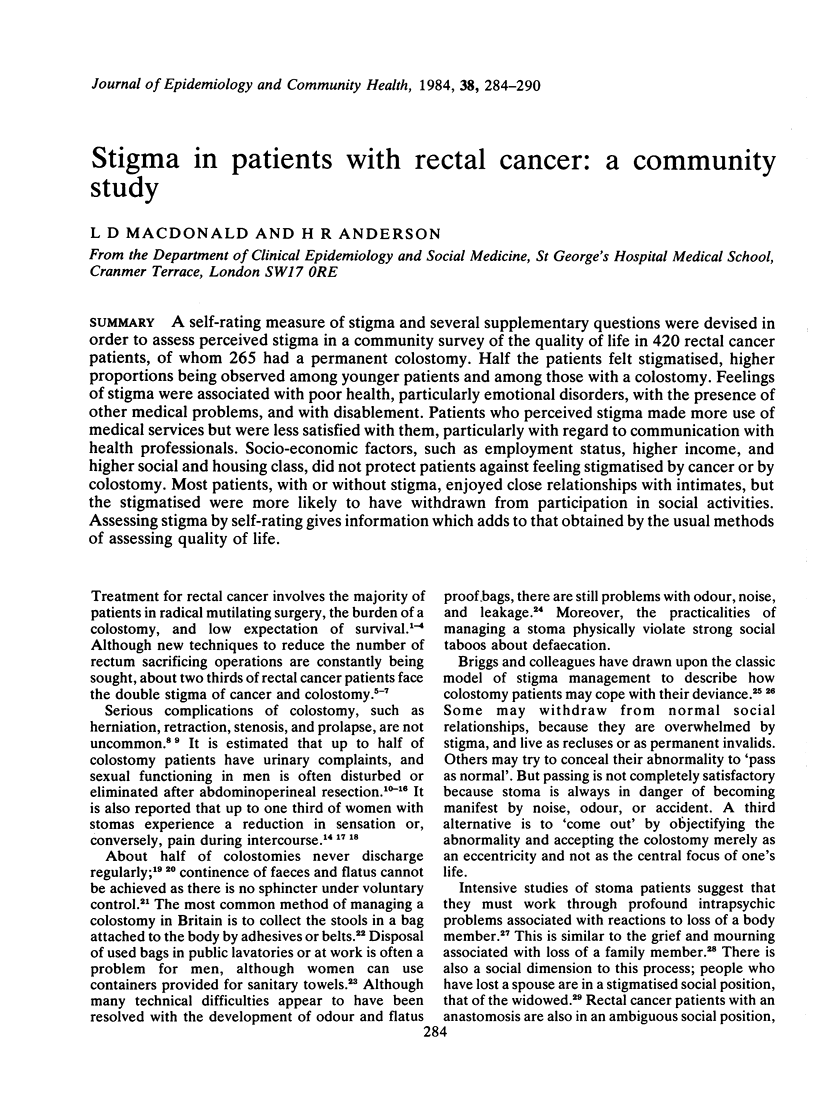
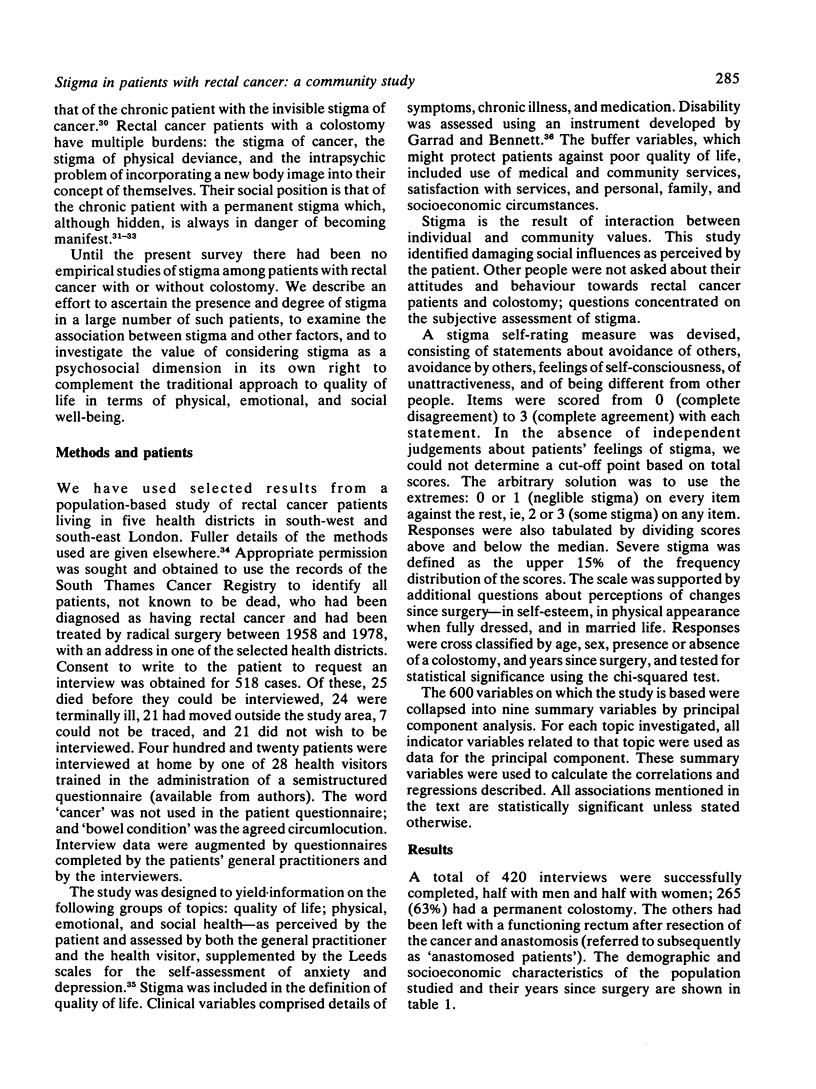
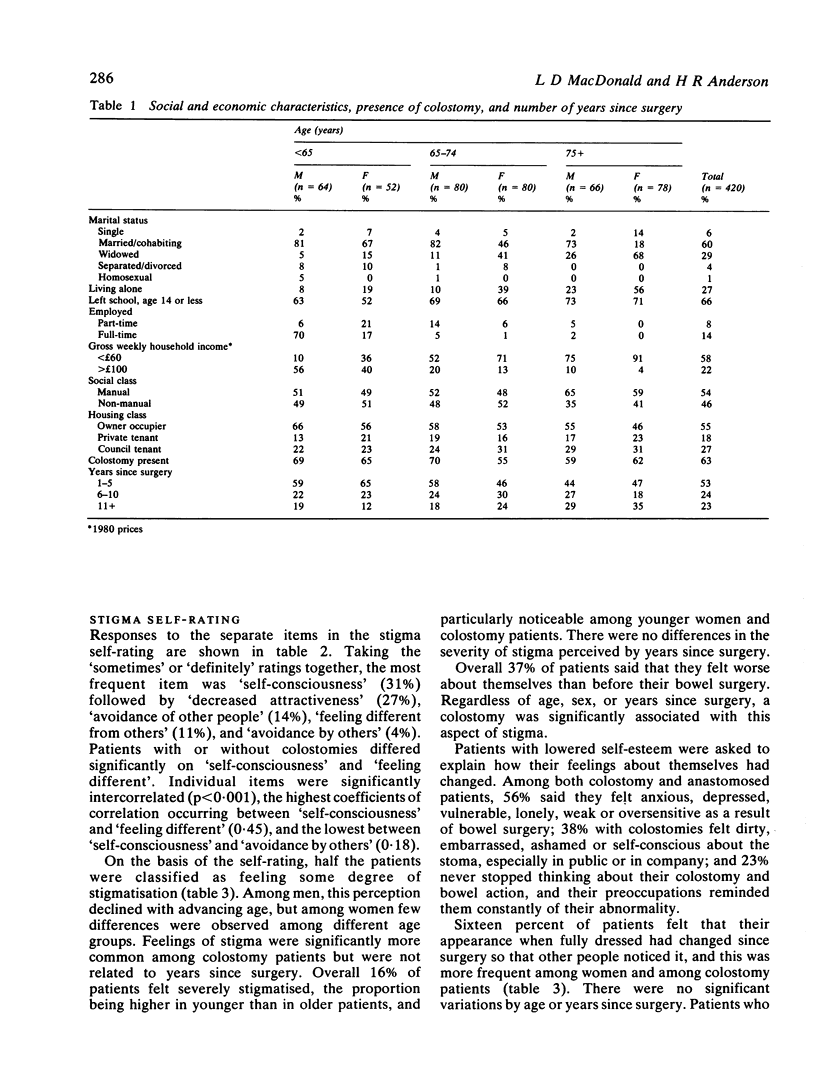
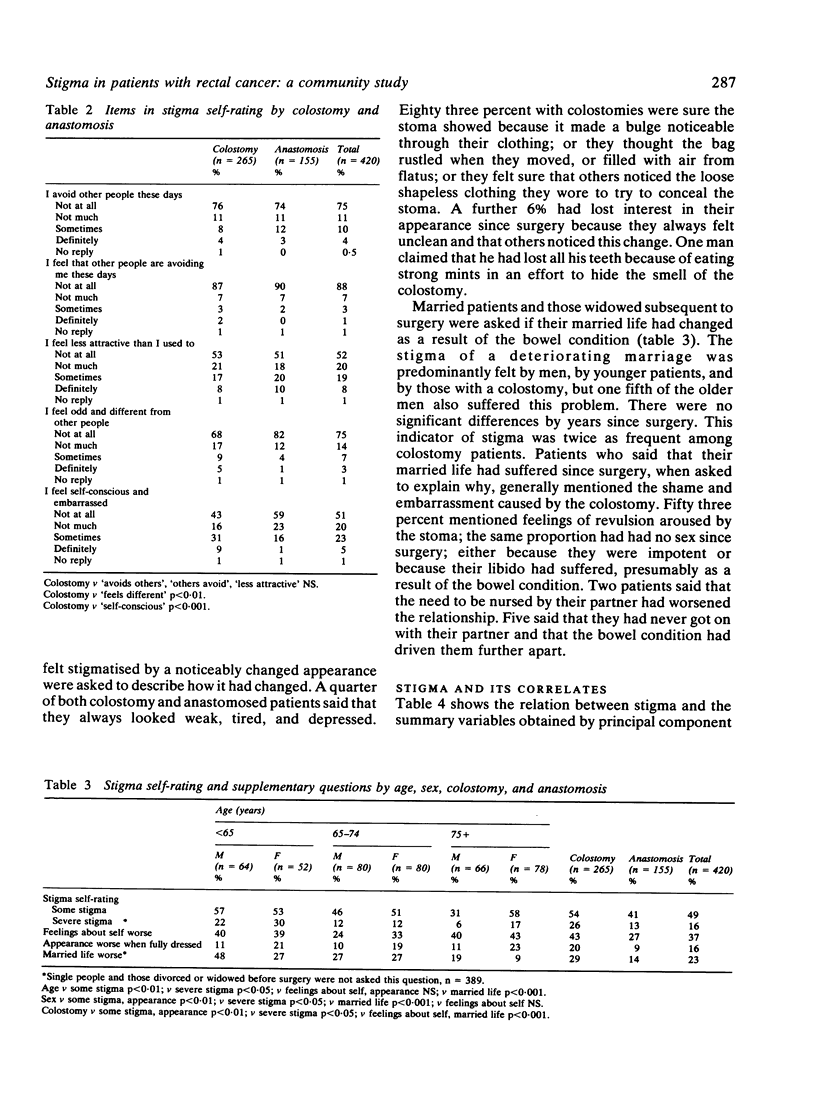
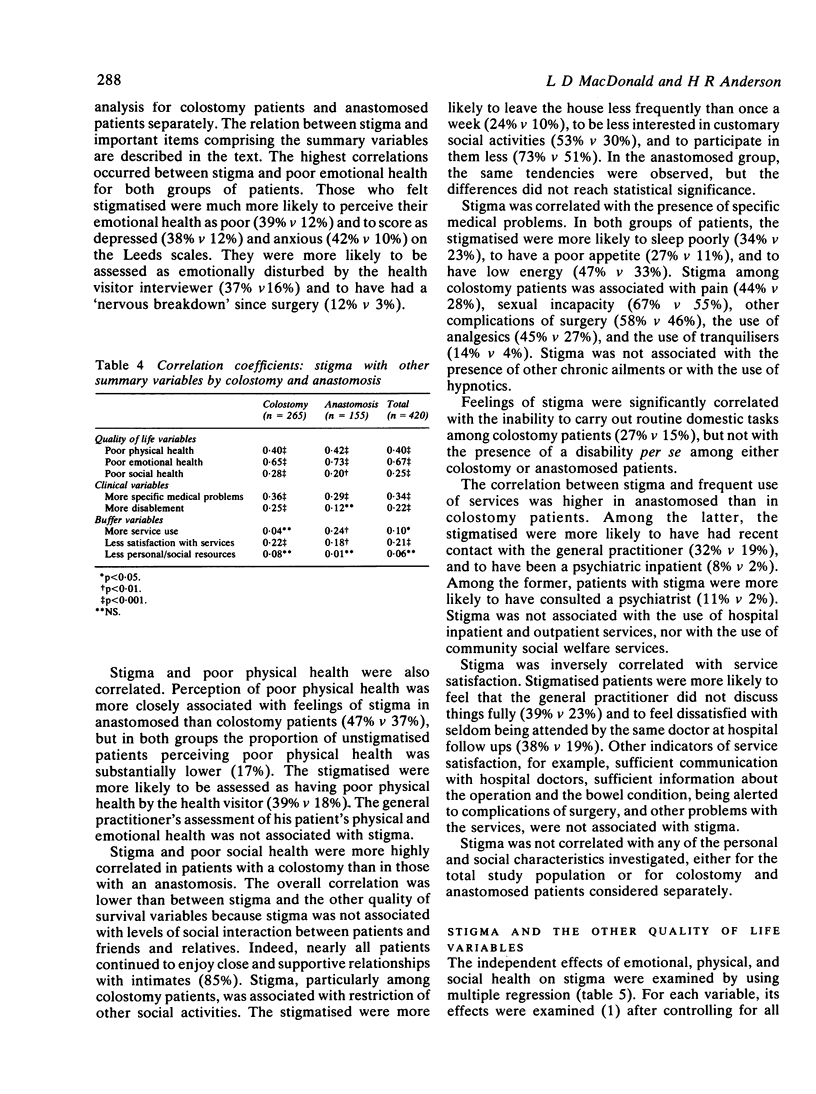
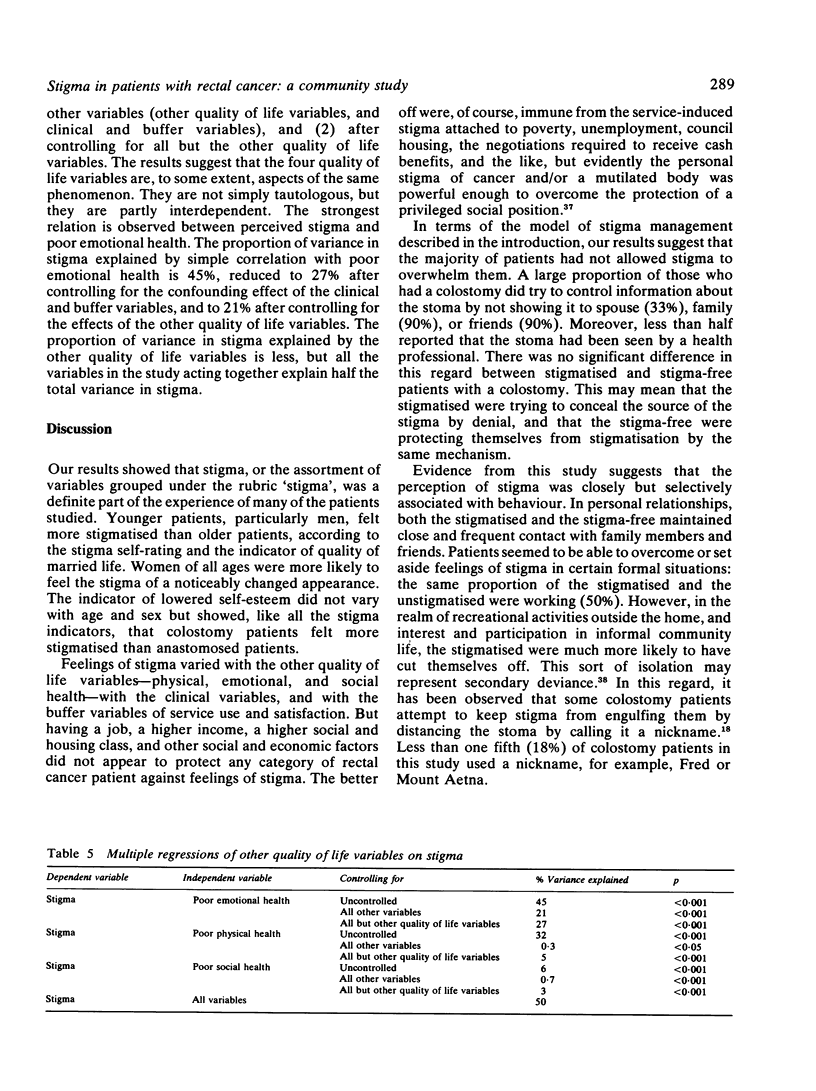
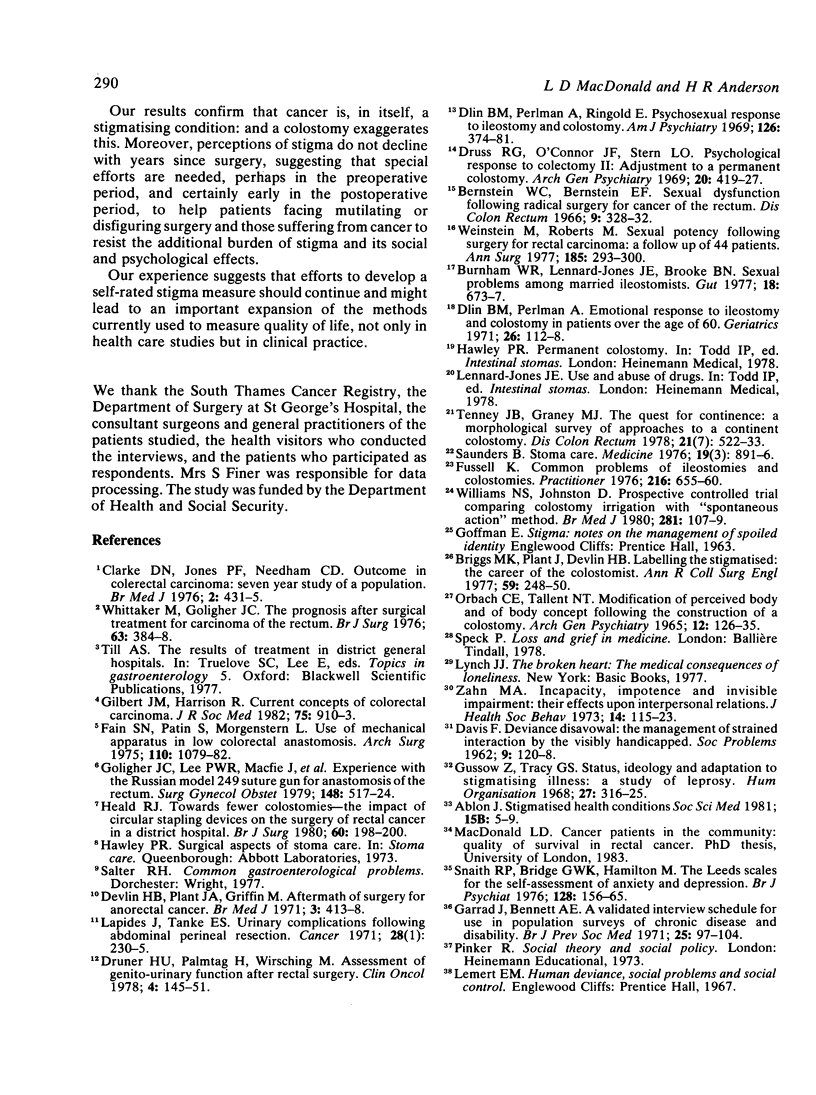
Selected References
These references are in PubMed. This may not be the complete list of references from this article.
- Bernstein W. C., Bernstein E. F. Sexual dysfunction following radical surgery for cancer of the rectum. Dis Colon Rectum. 1966 Sep-Oct;9(5):328–332. doi: 10.1007/BF02617099. [DOI] [PubMed] [Google Scholar]
- Burnham W. R., Lennard-Jones J. E., Brooke B. N. Sexual problems among married ileostomists. Survey conducted by The Ileostomy Association of Great Britain and Ireland. Gut. 1977 Aug;18(8):673–677. doi: 10.1136/gut.18.8.673. [DOI] [PMC free article] [PubMed] [Google Scholar]
- Clarke G. R., Thomas E., Proctor G. L. Mastectomy stand. Br Med J. 1968 May 18;2(5602):431–431. doi: 10.1136/bmj.2.5602.431. [DOI] [PMC free article] [PubMed] [Google Scholar]
- Devlin H. B., Plant J. A., Griffin M. Aftermath of surgery for anorectal cancer. Br Med J. 1971 Aug 14;3(5771):413–418. doi: 10.1136/bmj.3.5771.413. [DOI] [PMC free article] [PubMed] [Google Scholar]
- Dlin B. M., Perlman A. Emotional response to ileostomy and colostomy in patients over the age of 50. Geriatrics. 1971 Jun;26(6):112–118. [PubMed] [Google Scholar]
- Dlin B. M., Perlman A., Ringold E. Psychosexual response to ileostomy and colostomy. Am J Psychiatry. 1969 Sep;126(3):374–381. doi: 10.1176/ajp.126.3.374. [DOI] [PubMed] [Google Scholar]
- Druss R. G., O'Connor J. F., Stern L. O. Psychologic response to colectomy. II. Adjustment to a permanent colostomy. Arch Gen Psychiatry. 1969 Apr;20(4):419–427. doi: 10.1001/archpsyc.1969.01740160035006. [DOI] [PubMed] [Google Scholar]
- Drüner H. U., Palmtag H., Wirsching M. Assessment of genito-urinary dysfunction after rectal surgery. Clin Oncol. 1978 Jun;4(2):145–151. [PubMed] [Google Scholar]
- Fain S. N., Patin C. S., Morgenstern L. Use of a mechanical suturing apparatus in low colorectal anastomosis. Arch Surg. 1975 Sep;110(9):1079–1082. doi: 10.1001/archsurg.1975.01360150023004. [DOI] [PubMed] [Google Scholar]
- Fussell K. Common problems of ileostomies and colostomies. Practitioner. 1976 Jun;216(1296):655–660. [PubMed] [Google Scholar]
- Garrad J., Bennett A. E. A validated interview schedule for use in population surveys of chronic disease and disability. Br J Prev Soc Med. 1971 May;25(2):97–104. doi: 10.1136/jech.25.2.97. [DOI] [PMC free article] [PubMed] [Google Scholar]
- Heald R. J. Towards fewer colostomies--the impact of circular stapling devices on the surgery of rectal cancer in a district hospital. Br J Surg. 1980 Mar;67(3):198–200. doi: 10.1002/bjs.1800670311. [DOI] [PubMed] [Google Scholar]
- Lapides J., Tank E. S. Urinary complications following abdominal perineal resection. Cancer. 1971 Jul;28(1):230–235. doi: 10.1002/1097-0142(197107)28:1<230::aid-cncr2820280147>3.0.co;2-a. [DOI] [PubMed] [Google Scholar]
- ORBACH C. E., TALLENT N. MODIFICATION OF PERCEIVED BODY AND OF BODY CONCEPTS. Arch Gen Psychiatry. 1965 Feb;12:126–135. doi: 10.1001/archpsyc.1965.01720320014002. [DOI] [PubMed] [Google Scholar]
- Snaith R. P., Bridge G. W., Hamilton M. The Leeds scales for the self-assessment of anxiety and depression. Br J Psychiatry. 1976 Feb;128:156–165. doi: 10.1192/bjp.128.2.156. [DOI] [PubMed] [Google Scholar]
- Tenney J. B., Graney M. J. The quest for continence: a morphologic survey of approaches to a continent colostomy. Dis Colon Rectum. 1978 Oct;21(7):522–533. doi: 10.1007/BF02586741. [DOI] [PubMed] [Google Scholar]
- Weinstein M., Roberts M. Sexual potency following surgery for rectal carcinoma. A followup of 44 patients. Ann Surg. 1977 Mar;185(3):295–300. doi: 10.1097/00000658-197703000-00008. [DOI] [PMC free article] [PubMed] [Google Scholar]
- Whittaker M., Goligher J. C. The prognosis after surgical treatment for carcinoma of the rectum. Br J Surg. 1976 May;63(5):384–388. doi: 10.1002/bjs.1800630513. [DOI] [PubMed] [Google Scholar]
- Williams N. S., Johnston D. Prospective controlled trial comparing colostomy irrigation with "spontaneous-action" method. Br Med J. 1980 Jul 12;281(6233):107–109. doi: 10.1136/bmj.281.6233.107. [DOI] [PMC free article] [PubMed] [Google Scholar]
- Zahn M. A. Incapacity, impotence and invisible impairment: their effects upon interpersonal relations. J Health Soc Behav. 1973 Jun;14(2):115–123. [PubMed] [Google Scholar]


